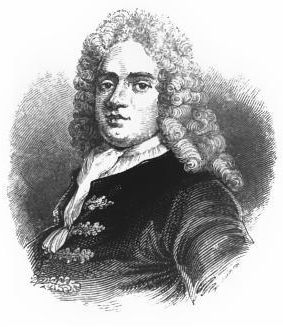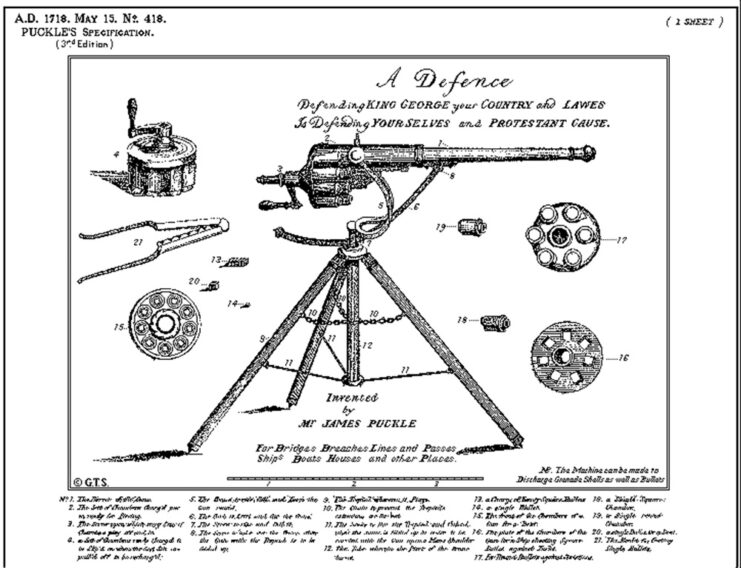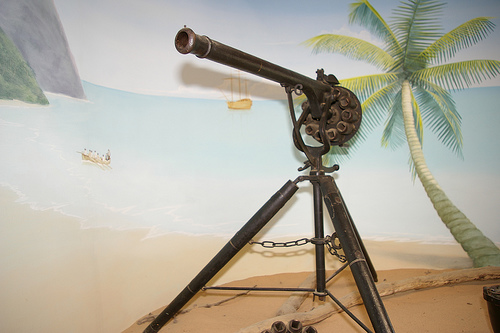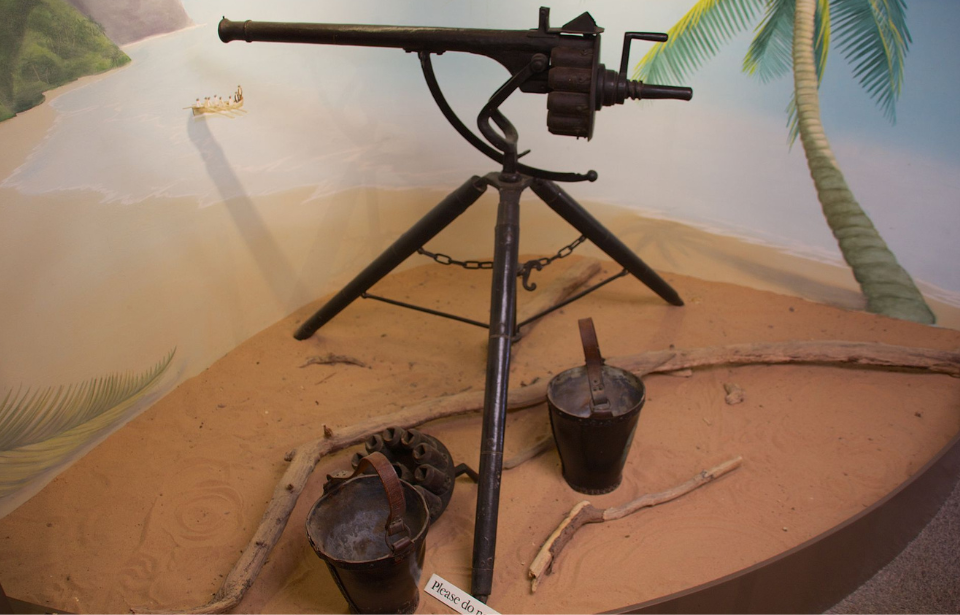Many consider the Maxim to be the world’s first machine gun – and they’re technically not wrong. Developed in 1884, it was the first automatic machine gun, but there were rudimentary models developed well over a century prior. One was the Puckle Gun, which not only failed to see use on the battlefield, but also fired both round and square bullets, making it a one of a kind weapon.
Development of the Puckle Gun

The Puckle Gun came from the mind of James Puckle, a British lawyer, inventor and writer. He was aware that the Royal Navy was struggling to combat Ottoman pirates, and thus began designing a gun that could serve as a rapid-fire anti-boarding weapon.
In 1717, Puckle submitted a prototype of his gun to the Board of Ordnance for trials, which immediately rejected it over issues with the flintlock mechanism. This didn’t stop him, however, from filing a patent the following year.
While he now legally owned his design, Puckle failed to find enough investors to mass produce the gun. While the exact totals are unknown, it’s widely believed only two were manufactured: the prototype, made from iron, and one full-scale production model, constructed from brass.
The ability to fire nine rounds per minute

The Puckle Gun, as it became known as, was a single-barrel flintlock weapon fitted with a manually-operated revolving cylinder. Consisting of a three-foot-long barrel, its cylinder had the ability to fire nine rounds per minute – an impressive total, given more traditional muskets could only fire three. Depending on the configuration, between six and 11 bullets could be stored in it at any one time.
Operators could fire the Puckle Gun much the same way they did a traditional flintlock musket. After each shot, the crank at the rear revolved, allowing the shooter to manually turn the cylinder to the next chamber. Once sealed, the mechanism was primed for firing.
The interesting thing about the tripod-mounted gun was that it was designed to fire both circular and square bullets. The circular rounds were designed to operate under the intended configuration, while the square bullets were targeted against the Ottomans. At the time, it was (incorrectly) believed the latter would cause more serious injuries, which would, in turn, “convince the Turks of the benefits of Christian civilization.”
The Puckle Gun never saw action on the battlefield

As the 1717 trials showed, the Puckle Gun had some serious issues it couldn’t overcome. The flintlock mechanism was faulty, and the system itself was far too complicated to mass produce. Some pamphlets even joked that it was more likely to hurt the person operating it, rather than the intended target.
More from us: Folding Gun Models That Allow Operators to Hide Their Weapons In Public
Given these issues and the lack of faith in the weapon, the Puckle Gun never saw the battlefield. While a shipping manifest related to John Montagu, 2nd Duke of Montagu, Master-General of the Ordnance’s unsuccessful invasions of St. Lucia and St. Vincent says two were acquired, there’s no evidence to prove they ever saw action.
